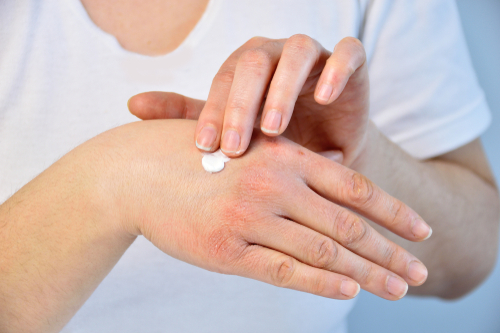Independent Committee Supports Additional Patient Enrollment in Phase 3 Trial of AP101 in EB Patients
Written by |

After an interim analysis of a Phase 3 trial testing Amryt Pharma’s investigational therapy AP101 in epidermolysis bullosa (EB) patients, an independent data monitoring committee (IDMC) has recommended the trial’s continuation, along with an increase in participants.
The enrollment of 48 additional patients, up to a total of 230, is expected to provide better statistical power to determine AP101’s superiority over a placebo, the IDMC believes.
“The IDMC’s recommendation is good news for Amryt as it allows us to continue the trial with only a modest increase in the size of the study. This brings us closer to potentially delivering a treatment for patients with EB,” Joe Wiley, CEO of Amryt Pharma, said in a press release.
AP101, also known as oleogel-S10, is a topical product (to be applied to the skin) that uses an ingredient from betula trees formulated with sunflower oil. Its unique formulation promotes the migration of keratinocytes — skin cells that regenerate the skin’s outer layer — into wound sites and their differentiation into mature cells. Ultimately, this leads to faster wound healing and skin restoration.
The Phase 3 EASE trial (NCT03068780), the largest global Phase 3 trial for EB patients, is designed to determine the safety and effectiveness of AP101, versus a placebo, in patients ages 4 or older with multiple subtypes of inherited EB, including junctional EB, dystrophic EB, and Kindler syndrome — which affect different layers of the skin — but not EB simplex.
Patients will be randomly assigned to receive AP101 or a placebo — sunflower oil gel without the active substance — for 90 days, after which all patients will be given AP101 for 24 months.
The primary goal is to determine the proportion of patients with a complete closure of the EB target wound within the first days of treatment. A secondary measure is the time to first complete wound closure.
Amryt will now resume patient enrollment in clinical sites across Europe, Australia, Asia, Latin America, the Middle East, and the United States. Top-line data is expected during the second half of 2019.
“We would like to thank sincerely the patients, families and clinical investigators involved in the EASE trial to date,” Wiley said. “Today’s news is a significant milestone for Amryt and our shareholders in building towards our vision of becoming a global leader in rare and orphan diseases.”
In 2016, AP101 was approved in the European Union for the treatment of partial thickness wounds in adults, under the brand name Episalvan.
In August 2018, the U.S. Food and Drug Administration granted rare pediatric disease designation to AP101 for the treatment of children with EB. This is expected to support and expedite its clinical development, regulatory review, and approval.
Amryt is also exploring a new gene therapy, called AP103, as a treatment for EB. The treatment is applied in the skin and delivers a healthy copy of the collagen VII gene — mutated in recessive dystrophic EB. Unlike other gene therapies, AP103 uses a synthetic molecule to transport the gene, instead of virus-based delivery systems, reducing the risk of adverse immune reactions.





